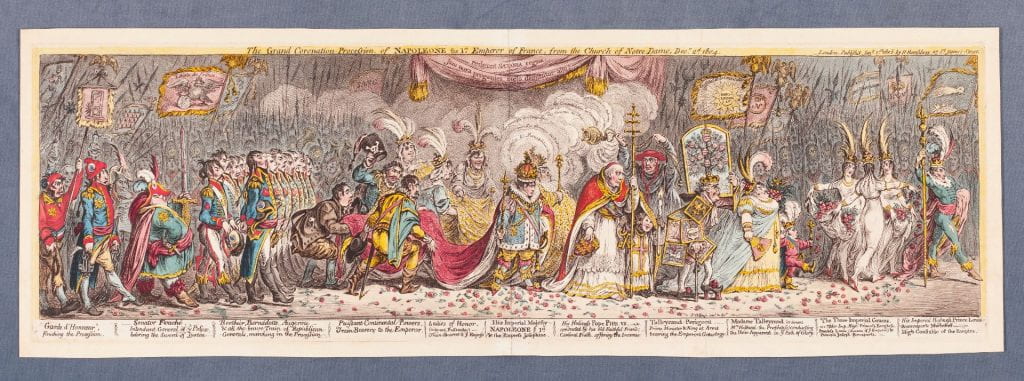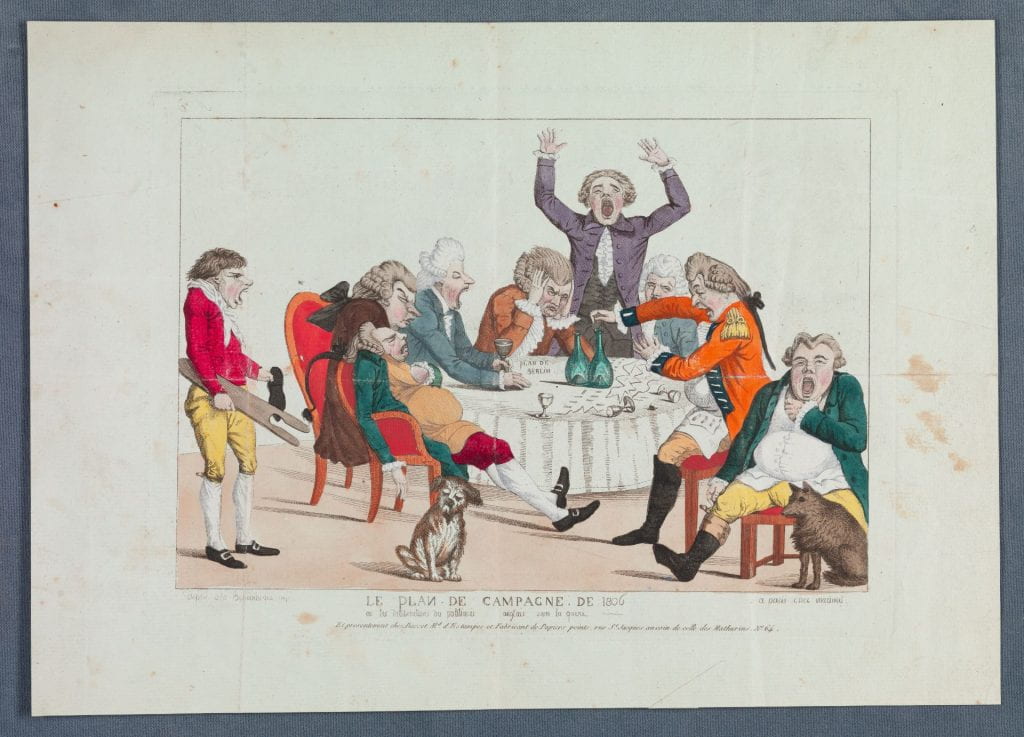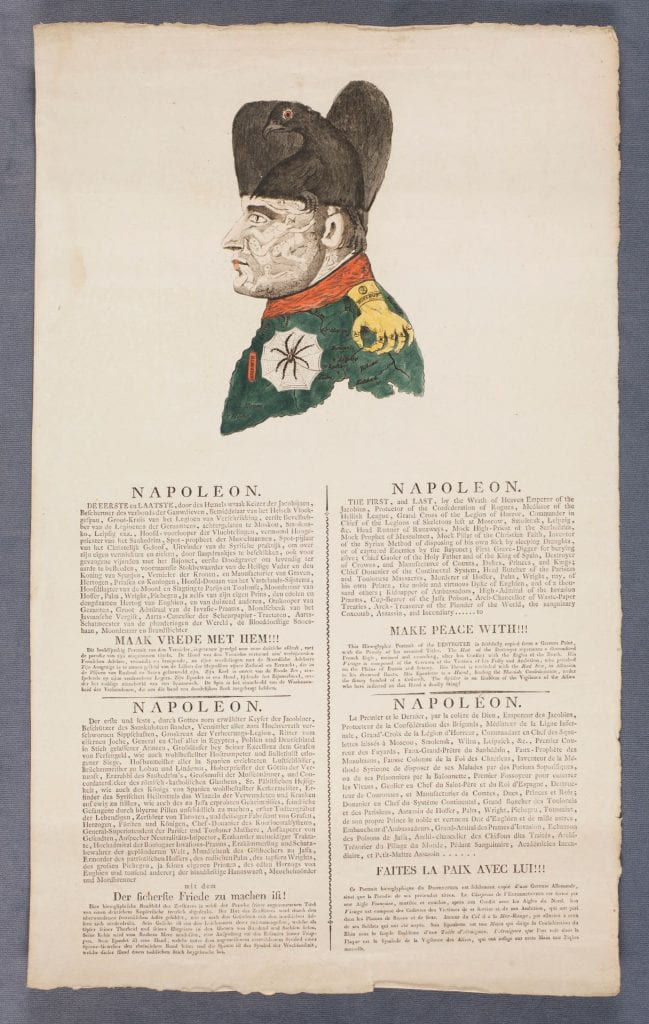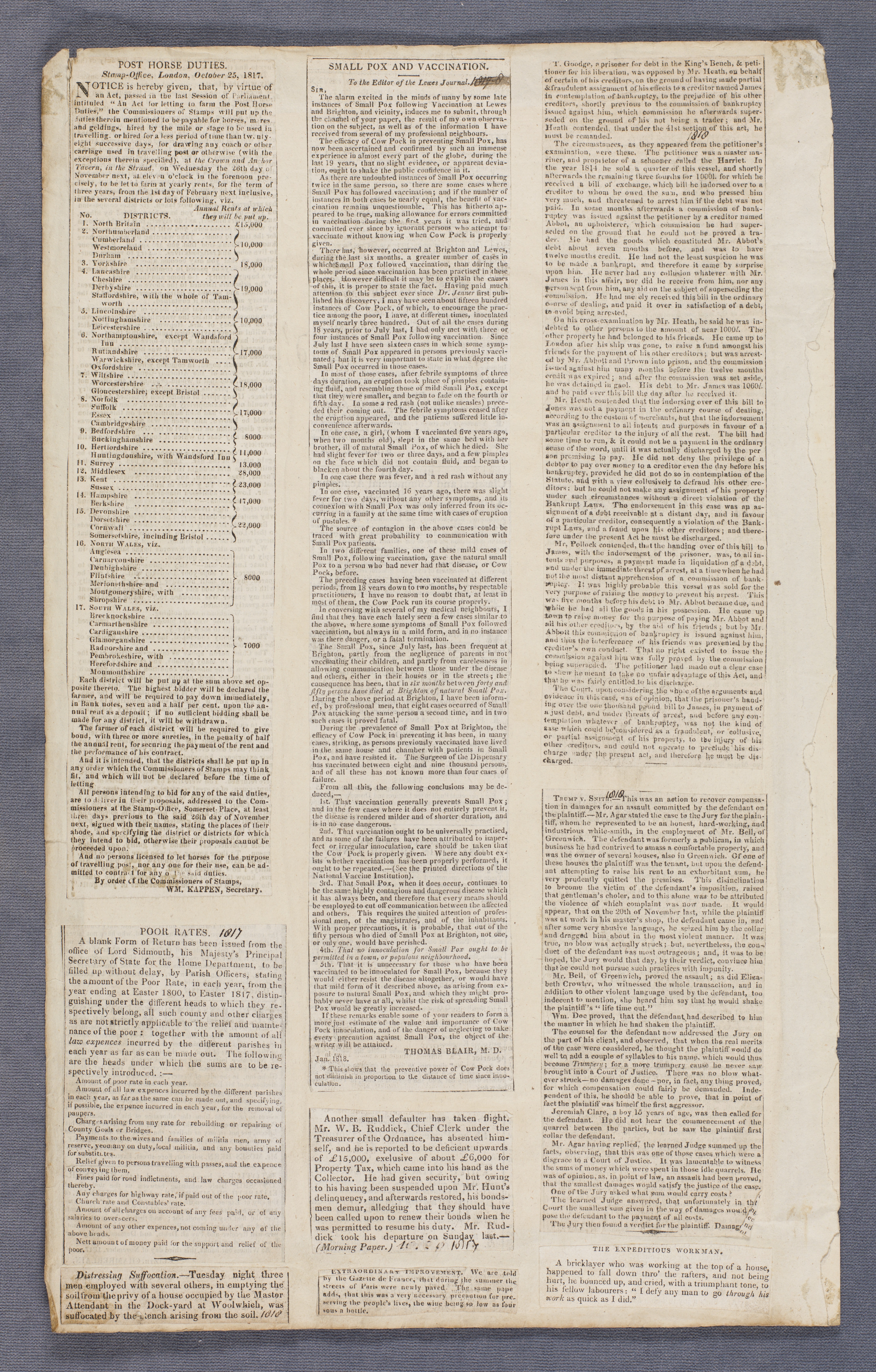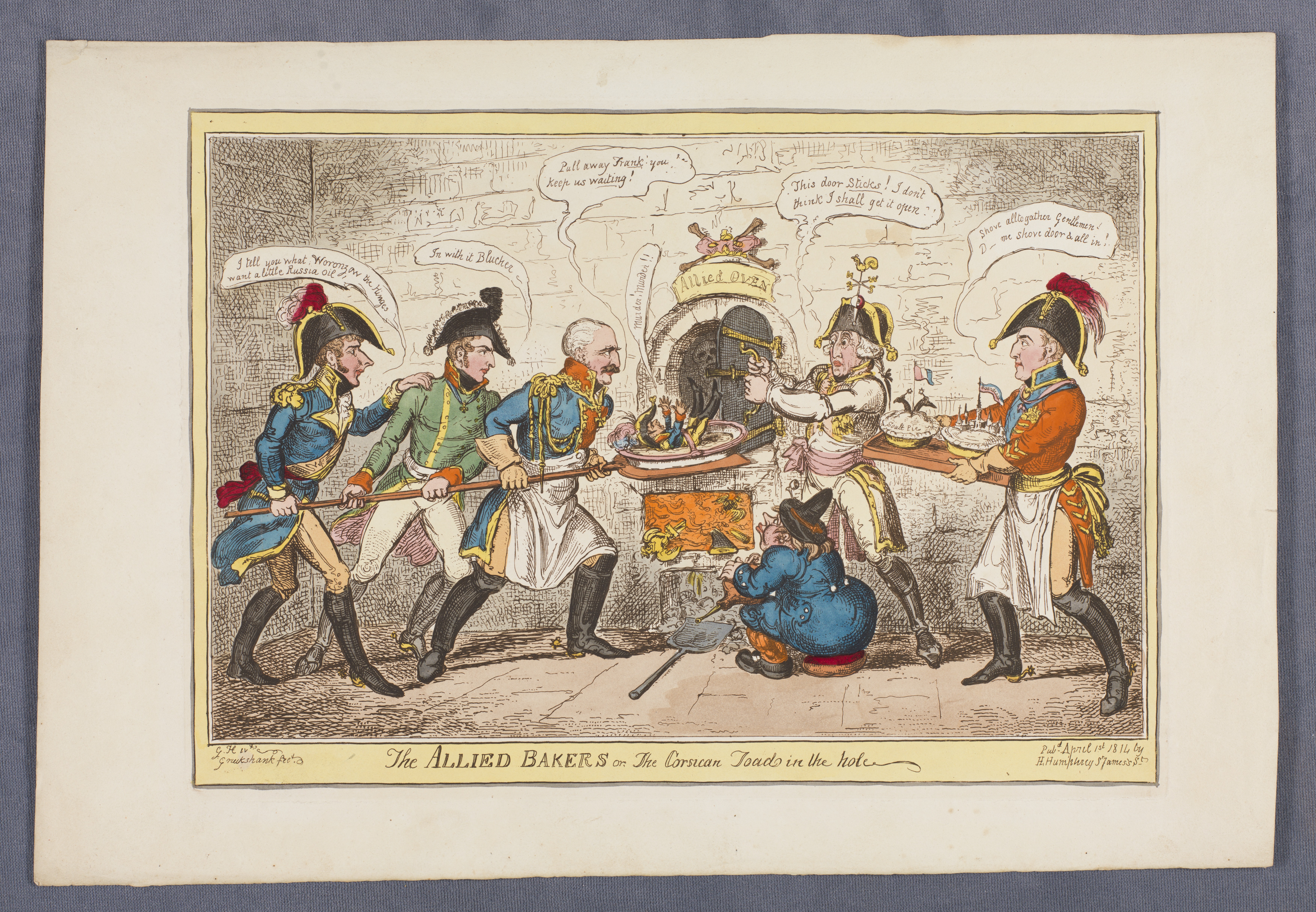
“Three allied generals (left) hold the long handle of a shovel (peel) on which is a dish containing a tiny Napoleon. This they try to push into a baker’s oven, but are hindered by the Austrian emperor, who holds the door of the oven, feigning to be trying to open it, but actually holding it at an angle which prevents the entry of the dish. The leading baker is Blücher, wearing an apron over his uniform, and without a hat; he looks sternly at Francis, saying, “Pull away Frank! you Keep us waiting!” General Mikhail Woronzoff, young and handsome, immediately behind Blücher, pushes hard, saying, “In with it Blücher.” On the extreme left is Bernadotte, one hand on Woronzoff’s shoulder, saying, “I tell you what, Woronzow, the Hinges want a little Russia Oil.” Francis I, who like the others wears uniform with jack-boots, but has (baker’s) over-sleeves to the elbow, says with an expression of startled alarm: “This door Sticks! I dont think I shall get it open?!” A weathercock surmounts his cocked hat. Wellington comes up (right), poking him in the back with his baker’s tray on which are two pies. He says: “Shove alltogather [sic] Gentlemen! D-me shove door & all in!” His two pies are ‘Soult Pie’, with two spurred jack-booted legs projecting through the crust, and a pie with spires and other buildings, with a flag inscribed ‘Bourdeaux’. He wears an apron and the order of the Golden Fleece as well as the star of the Garter. A fat, grotesque Dutchman sits on a flat cushion gazing up at the oven; he holds, but does not use, a pair of bellows. In his conical hat is a tobacco-pipe. The fire under the oven is filled with broken eagles and fragments of weapons. Among the debris in the recess for ashes is a crown. Above the oven is the inscription ‘Allied Oven’ surmounted by a crown and cross-bones. In the shadow formed by the half-open door, a skull (Death) waits to receive Napoleon, who lies on his back, kicking violently, and shouting “Murder! Murder!!”; he wears a large plumed bicorne. The stone wall in which the oven is built forms the background.”–British Museum online catalogue.
- Printmaker: Cruikshank, George, 1792-1878, printmaker.
- Title: The allied bakers, or, The Corsican toad in the hole [graphic] / G.H. ivt. ; Gruikshank [sic] fect.
- Publication: [London] : Pubd. April 1st, 1814, by H. Humphrey, St. James St., [1 April 1814]
Catalog Record
814.04.01.02+
Acquired June 2018


